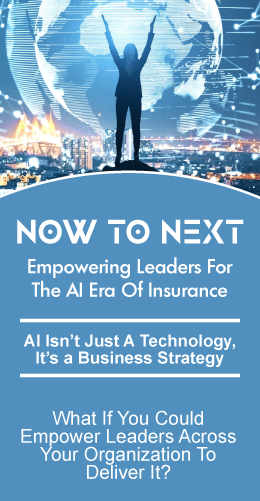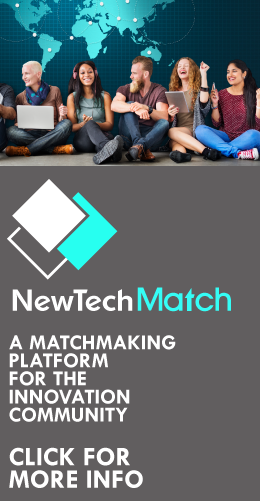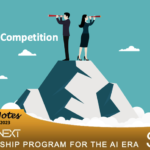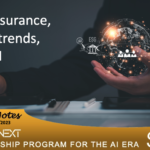
Digital transformation is not about technology. Yet, isn’t that where we tend to focus? It is too easy for us as insurance business and IT leaders to fixate on technology problems and solutions and overlook the most critical (and more difficult) changes that must take place if we are to transform our organizations…changes in attitudes, beliefs, and day-to-day behaviors that are critical for true transformation and success with digital business.
Digital Transformation:
Reimagining how business should be done. It spans the people, processes, and technologies of an organization and may involve radical changes to its value propositions, speed to market, flexibility, and the customer experience.
For insurers, digital transformation is rethinking what it means to be in the business of insurance.
We rail against the limitations of our legacy systems, but we don’t consider how the behaviors they encourage (even require) can be just as limiting. Information silos and lack of communication among people, teams, and departments mirror systems that cannot communicate. The need for manual review and processing — often only possible via paper-based processes — due to limited support for business, workflow, and broader automation. Teams that can’t move faster because they have become accustomed to thinking in elongated cycle times driven by current system and process limitations. General confusion around processes and requirements due to poorly documented “spaghetti” code that has been patched and repatched by many different hands…sometimes over decades.
These challenges generate inertia and fear that can paralyze an organization. It’s hard for leaders to know where to begin and what to push on to drive change. Where does the system stop and our business — even our culture — begin? How will we deal with the unknown? How will we manage work with new capabilities and new models, such as remote work, and new agile project methodologies?
So we try to change, we try to break the inertia and move fast. We seek out state-of-art technology to overcome our legacy limitations. Cloud. SaaS. IoT. AI. Microservices. Blockchain. Big Data. We load up on all the buzzwords. We decide to “bite the bullet” and charge forward; we commit to completely remake our technology…and we want to do it yesterday!
But while we’re ripping and replacing our technology, we don’t address the behaviors that came with the old systems. We fail to communicate and coordinate with all stakeholders. We recreate processes that only existed in the first place because of past limitations. We insist on methodologies that come with massive process overhead and cannot support rapid progress. We lack urgency and fail to move as quickly as we could because we continue to operate within models based on the speed limits of our former tech. And, too often, we do all of this on a massive scale that creates confusion and disruption across our organizations.
Or — worse yet — we do nothing. We decide the challenge is just too difficult. We wait. Maybe the timing will be better in a couple of years. Maybe the systems, the options will improve…some new silver bullet might come on the scene. (For some, maybe they secretly hope if they wait long enough they can retire and let it be someone else’s problem.)
Is there a better way?
We believe so. At BriteCore we are fascinated with and encouraged by the ways that modern technologies can be intertwined with and reinforce new mindsets and behaviors that are critical to accelerating change and achieving transformation.
To succeed with digital business, our people need to learn to be less risk-averse. Ideas need to be experimented with; opportunities tested. Our organizations need to learn to engage with new ideas and push hard to fail fast — anathema to our pre-digital culture — and use these invaluable learnings to push ahead to successful ideas. At BriteCore, we’ve seen how cloud deployments enable our clients to quickly spin up new systems and pursue new opportunities. With associated SaaS models, insurers pay only for the computing power that they use, and they can spin down these experiments just as quickly as they started. If successful, deployments on hyperscale cloud platforms, such as AWS, give insurers tremendous scalability and room for growth.
As companies move into “transformation” mode, it can be difficult to know where to begin, and easy to attempt to do too much too soon (and using old approaches that slow progress). Insurers need to be able to break this challenge into manageable pieces. We’re encouraged how the move to service-oriented architecture and (more recently) microservices is giving insurers more discreet and contained capabilities with standalone applications and components instead of monolithic systems. Rather than trying to tackle it all, insurers can redo specific pain points – such as rating, quoting, underwriting, and business rules. As they have initial success and begin to adopt new work patterns, they can move confidently to bigger challenges.
It’s critical that our people shift from a static mode to a continuous improvement mode of operation, and be constantly learning. This was not possible (could even create problems!) with legacy technologies. The shift toward continuous development with cloud-based systems and SaaS models has created a new breed of evolving systems with ongoing, incremental improvements. This fosters a continuous improvement mindset and reinforces the critical notion that digital transformation is a journey. It’s not a destination. We can’t afford to stop learning and trying to make things better.
Making things better requires our people to “think outside the box.” Embrace new solutions and new approaches to the challenges and opportunities we face. This is incredibly hard to do with systems that can’t communicate with other systems. At BriteCore, we’ve seen how providing comprehensive APIs to enable access to our systems opens up a wide range of new possibilities. Whether it’s supporting a radically different customer experience with a custom UI, accessing new catastrophe risk data sources to improve key processes such as underwriting, incorporating emerging tech like machine learning and AI, or integrating with other systems to orchestrate new non-traditional services, use of APIs breaks down barriers and can make “the box” feel limitless.
Digital transformation is hard. It’s change. Change will never be easy…but digital transformation is becoming easier (and more successful) as business and IT leaders learn to intertwine these cultural and technical factors so that instead of ignoring or fighting against them, they are using them to reinforce and accelerate the change they are trying to achieve.

Phil Reynolds, CEO & Co-Founder
BriteCore
Mr. Reynolds is the Founder & CEO of BriteCore, a cloud-based P&C core platform. Phil has led BriteCore through its rapid growth to a community of over 70 insurers, MGAs, and insurtechs today.

Jeff Haner, Director of Market Research & Strategy
BriteCore
Mr. Haner heads BriteCore thought leadership and market research. Before BriteCore, Jeff held leadership roles with companies such as Deloitte, NJM Insurance Company, and Gartner.








